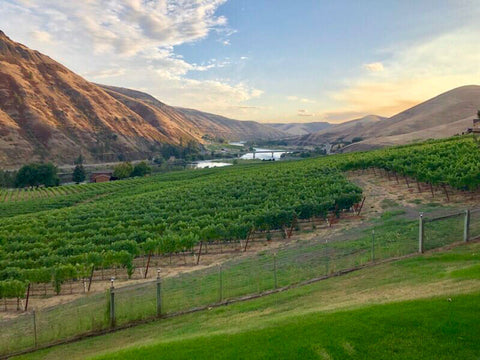An AVA to Call Our Own
In May 2016, the Lewis-Clark AVA was authorized by the federal government following lots of hard work by local growers who championed the application for the benefit of the community. It spans 306,658 acres in Idaho and Washington along the Snake and Clearwater Rivers. Long before the new AVA became a reality, this area was known as a premium wine producing area in the early 20th century. Prohibition changed all of that for local vintners until grape growing experienced a revival in the early 2000s. There are now a handful of thriving wineries, more than a dozen growers and close to 100 acres of vineyards in this fertile geological area.
With the majority of land located in Idaho (about 72% or 219,838 acres), the Lewis-Clark Valley AVA designation is an important part of a regional identity for wine growers and vintners in our state. It covers seven counties in Idaho and Washington along a 40-mile-long strip that includes canyons, low plateaus and bench lands in the vicinity of Lewiston, Idaho, and Clarkston, Washington. Rivaura's location is 12 miles east of Lewiston. Learn more about the region here.

What the Rocks Can Tell Us

Before planting any grapes at Rivaura Estate Vineyards, we turned to acclaimed geology expert, Kevin Pogue, PhD, RG, of VinTerra Consulting based in Walla Walla, Washington. Dr. Pogue works with many of the region's leading wine producers, serves as Geology Professor at Whitman College and remains a sought after guru on the terroirs of the Pacific Northwest by national media, such as The New York Times.
We learned from Dr. Pogue that the unique geological character of our 26 acres of vineyard was created by the same forces that make the terroir of the Walla Walla Valley stand out, namely the epic Missoula floods that blanketed the region 15,000-13,000 years ago and the lava flows that left basalt deposits 16-million years ago. The floods eroded the basalt bedrock (volcanic in nature) and left behind layers of loess (windblown sediment), gravel, silt and large granite boulders (also known as "erratics" like the ones in our vineyard) in its wake. These conditions are ideal for growing ultra-premium wines.
In Dr. Pogue's assessment, "The Rivaura vineyards are ideally situated to grow grapes to make superb wines. The elevation, soils, and climate are identical to some of the best vineyards in the Walla Walla Valley. I believe that some of the finest wines ever produced from Idaho grapes will be sourced from these vineyards."
